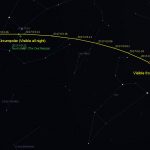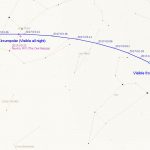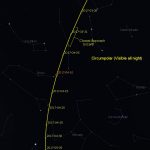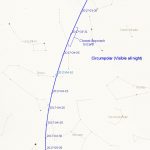This comet was first discovered in 1858 by Horace Parnell Tuttle of the Harvard College Observatory, Cambridge, Massachusetts. It was then re-discovered by Michel Giacobini in 1907 and Ľubor Kresák in 1951. The comet had two close encounters with Jupiter that have altered its orbit slightly.
09 June, 1975 – 0.37 AU from Jupiter
-Decreased perihelion distance by 0.03 AU
-Increased orbital period from 5.56 to 5.58 years
16 February, 1988 – 0.67 AU from Jupiter
-Decreased perihelion distance by 0.05 AU
-Decreased orbital period from 5.58 to 5.46 years
Closest approach in 2017 will be on 01 April and will be the closest encounter with Earth for over a century at a distance of 0.14AU (13.67 million miles). Comet 41P will be well placed in the evening skies in the northern hemisphere from the beginning of the year through to July. Likely not bright enough for binocular viewing until March, however the comet should reach naked eye visibility around the time of closest approach. Perihelion is on 12 April at a distance of 1.04 AU.
Current Magnitude (Approx): 7.5
Orbit Diagram
Finder Charts
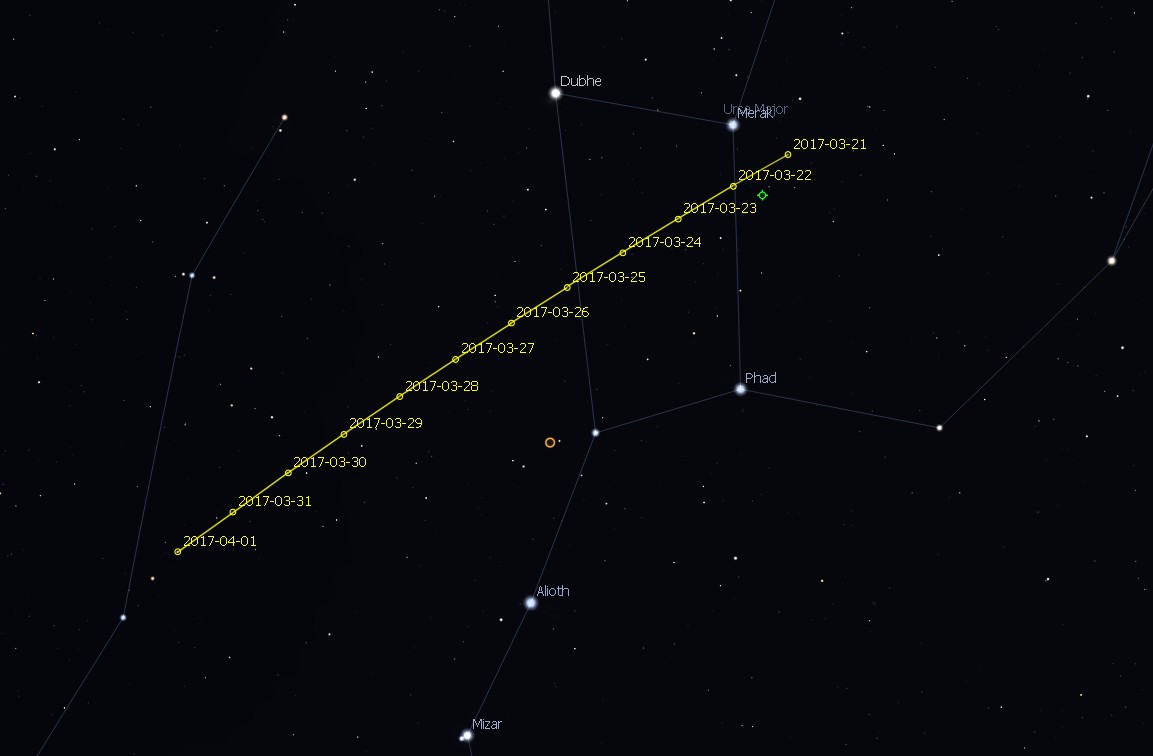
01 January – 26 March 2017 |
26 March – 30 April 2017 |

